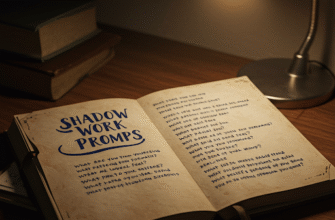Stress. It’s that unwelcome guest that seems to show up at the most inconvenient times. Deadlines looming, family issues bubbling, traffic jams that feel like they last an eternity – life can throw a lot our way. But what if I told you that you could equip yourself with some quick, effective tools to manage stress and find a little oasis of calm amidst the chaos? Let’s dive into some techniques you can use almost anywhere, anytime.
Understanding the Nature of Stress
Before we jump into solutions, it’s important to understand what stress is. It’s not just a feeling; it’s a physiological response. When faced with a perceived threat (whether it’s a real danger or just a tough presentation), our bodies release hormones like cortisol and adrenaline. These hormones prepare us for “fight or flight,” increasing heart rate, sharpening senses, and tensing muscles. While this response is essential for survival in truly dangerous situations, prolonged activation can wreak havoc on our physical and mental well-being.
Chronic stress is linked to a range of health problems, including heart disease, high blood pressure, weakened immune system, and mental health disorders like anxiety and depression. Effectively managing stress is therefore not just about feeling better; it’s about protecting your long-term health.
Quick Relief Techniques: Your Emergency Stress Kit
Now, let’s get to the practical stuff. These techniques are designed to be quick, discreet, and effective in managing stress in the moment.
1. The Power of Breath: Diaphragmatic Breathing
This isn’t just breathing; it’s intentional breathing. When we’re stressed, we tend to breathe shallowly, using only our chest. Diaphragmatic breathing, also known as belly breathing, involves engaging the diaphragm, the muscle located below the lungs. This type of breathing helps to slow your heart rate, lower blood pressure, and calm the nervous system.
How to do it:
- Find a comfortable position, either sitting or lying down.
- Place one hand on your chest and the other on your belly.
- Inhale slowly and deeply through your nose, allowing your belly to rise while keeping your chest relatively still.
- Exhale slowly through your mouth, allowing your belly to fall.
- Repeat for 5-10 minutes, focusing on the rise and fall of your belly.
You can do this anywhere – on the bus, at your desk, even in a crowded meeting (just try to be subtle!).
2. Mini-Meditation: The 5-4-3-2-1 Grounding Technique
This is a fantastic technique for anchoring yourself in the present moment, especially when your mind is racing with anxious thoughts. It engages your senses to bring you back to reality.
How to do it:
- 5: Acknowledge five things you can see around you. It could be anything – a pen, a cloud, a crack in the wall. Just notice them without judgment.
- 4: Acknowledge four things you can physically feel. This could be the texture of your clothes, the feeling of your feet on the ground, the warmth of the sun on your skin.
- 3: Acknowledge three things you can hear. This could be the hum of the air conditioner, the sound of traffic, the chirping of birds.
- 2: Acknowledge two things you can smell. This could be the scent of your coffee, the fragrance of flowers, the smell of the air.
- 1: Acknowledge one thing you can taste. This could be the lingering taste of your lunch, the taste of your saliva, or simply the taste of your breath.
This exercise is quick, easy, and incredibly effective at bringing you back to the present.
3. Progressive Muscle Relaxation: Tense and Release
This technique involves systematically tensing and releasing different muscle groups in your body. It helps to release physical tension that often accompanies stress and anxiety.
How to do it:
- Find a comfortable position, either sitting or lying down.
- Start with your toes. Tense the muscles in your toes as tightly as you can, holding the tension for 5-10 seconds.
- Release the tension completely, and notice the feeling of relaxation.
- Move up your body, tensing and releasing each muscle group in turn: feet, calves, thighs, buttocks, stomach, chest, arms, hands, shoulders, neck, and face.
- Focus on the difference between the feeling of tension and the feeling of relaxation.
This technique may take a little longer than the others, but it can be incredibly effective at releasing pent-up tension.
4. The Mental Vacation: Visualization
This technique involves using your imagination to transport yourself to a peaceful and relaxing place. It can be a real place you’ve visited or a completely imaginary one. The key is to engage your senses and fully immerse yourself in the experience.
How to do it:
- Close your eyes and take a few deep breaths.
- Imagine yourself in a place that you find peaceful and relaxing. This could be a beach, a forest, a mountaintop, or anywhere else that brings you joy.
- Engage your senses. What do you see? What do you hear? What do you smell? What do you feel?
- Spend a few minutes enjoying the sights, sounds, and sensations of your mental vacation.
Even a few minutes of visualization can significantly reduce stress and improve your mood.
5. Physical Movement: The Quick Stress Buster
Getting your body moving can be a surprisingly effective way to release stress. Exercise releases endorphins, which have mood-boosting effects. You don’t need a full workout to get the benefits. A quick walk around the block, a few jumping jacks, or even a simple stretch can make a difference.
Ideas for quick movement:
- Take a brisk walk for 10 minutes.
- Do some stretches at your desk.
- Dance to your favorite song.
- Climb the stairs instead of taking the elevator.
Remember to consult your doctor before starting any new exercise program, especially if you have any underlying health conditions.
Building a Stress-Resilient Lifestyle
While these quick techniques are great for managing stress in the moment, it’s also important to build a lifestyle that supports your overall well-being and makes you more resilient to stress. This includes:
- Regular exercise: Aim for at least 30 minutes of moderate-intensity exercise most days of the week.
- Healthy diet: Nourish your body with whole, unprocessed foods.
- Sufficient sleep: Aim for 7-8 hours of quality sleep each night.
- Strong social connections: Spend time with loved ones and build meaningful relationships.
- Mindfulness practices: Incorporate mindfulness into your daily routine, such as meditation or yoga.
- Time management skills: Learn to prioritize tasks and manage your time effectively.
Conclusion: You Are Not Alone
Stress is a common experience, and it’s important to remember that you are not alone. If you’re struggling to manage stress on your own, don’t hesitate to seek help from a mental health professional. They can provide you with additional tools and strategies for coping with stress and improving your overall well-being. These quick stress relief techniques are a great starting point, but remember that building a stress-resilient lifestyle is a journey, not a destination. Be patient with yourself, experiment with different techniques, and find what works best for you. You deserve to live a life free from the overwhelming grip of stress.








